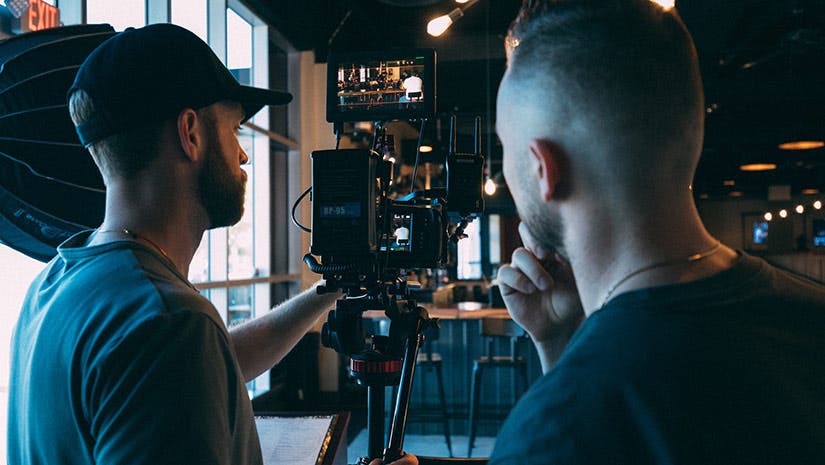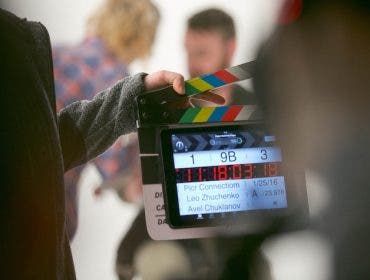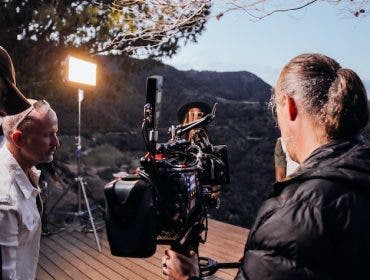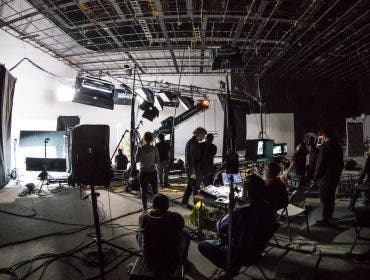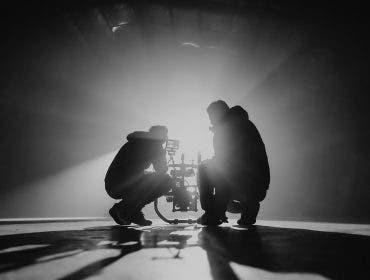Do you dream of shooting your own music videos or feature films for a living? There are many important things that you’ll need to know and equip yourself with in order to get started in the field. But to really become a cinematographer, you’ll need more than just the gear and technical know-how. You’ll need powerful film techniques to help you achieve your goals.
Cinematography is all about the art of visual storytelling. Aside from skillfully operating a camera and setting up the lighting for every scene, it involves controlling what the viewer sees and how the image is presented to them — by choosing the right shooting techniques that best tell the story.
Below we’ve listed down some of the most widely-used cinematography techniques that can help dictate how your audience should feel about your scene, as well as how they will interpret it. These should help both aspiring and professional cinematographers create the most impactful and engaging films and music videos.
14 Basic Cinematography & Film Techniques
- Extreme long shot
- Bird’s eye shot
- Long shot
- Medium shot
- Close up shot
- Extreme close up shot
- Dutch angle shot
- Over-the-shoulder shot
- Tilt shot
- Panning shot
- Zoom shot
- Crane shot
- Tracking shot
- Point-of-view shot
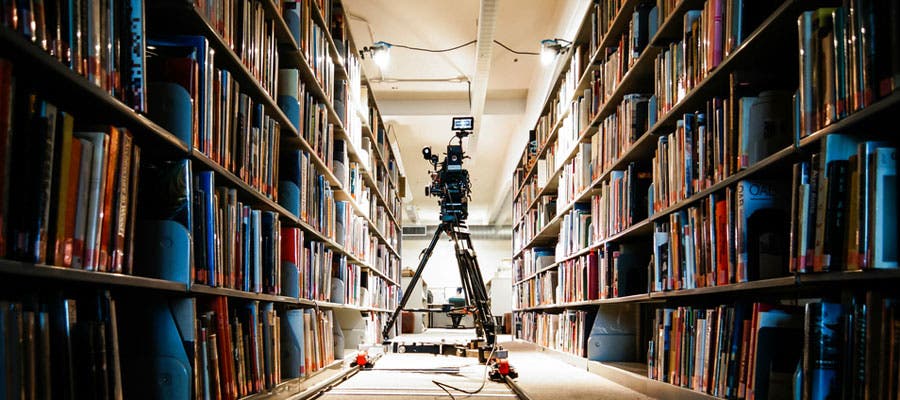
Grab your cinema camera and get ready to try out these easy and familiar cinematography techniques that will help make your videos look more professional. We’ll also explain how the shots can affect your scene, so you can make your shots work together to form a beautiful, clear, and cohesive narrative.
1. Extreme long shot
The extreme long shot captures a very wide area to show the scale of subjects in relation to their environment, like tiny birds in a forest. It is typically used as an establishing shot when changing from one big area or city to another.
2. Bird’s eye shot
Like the extreme long shot, the bird’s eye shot shows massive scale but from a much higher angle to the point where the land starts to show abstract shapes and lines out of roads, buildings, and trees. It is also typically used as an establishing shot for introductions and scene transitions.
3. Long shot
The long, full, or wide shot is a significantly closer shot of an area where viewers can have a better look of what’s going on, but still not close enough to actually be emotionally involved in the scene. Subjects are also closer to the camera but far enough to have their whole bodies in view. It can be used to make your viewers feel like a casual bystander, such as when your leading actors are shown walking hand in hand while crossing the street.
To add just a little bit more intimacy, move in a little closer for a medium-long shot until your subject is shown from the knees up. This allows better focus on a group of 2 to 3 people at the same time.
4. Medium shot
The medium shot allows viewers to move in a lot closer but in a more informative way than an emotional one. The frame typically features a person from the waist up and is used for general group scenes with dialogues and interviews.
You can also move in just a little bit closer for a medium close-up shot to better show the expressions and emotions of an actor.
Simply frame the subject’s head up to about half of the chest to increase viewers’ focus on the person and show less of the surroundings. This is commonly used for documentaries and news programs.
5. Close-up shot
The close-up shot features just the entire head up to the chin or neck to allow viewers to feel more engaged and affected by the character’s emotions. By framing less of the background and more of just the face, you are able to create an impact with the character’s facial expressions.
6. Extreme close-up shot
An extreme close-up shot is used sparingly and saved for moments when you need to increase the emotional intensity of a scene. You can do this by really zooming in on the character’s face, sometimes just on the eyes or even the hands. It works just as well for objects, like the ticking hands of a clock or brush strokes. While these shots greatly lack context, it’s great for setting the mood or adding drama and intimacy.
7. Dutch angle shot
To execute the Dutch angle shot, you simply need to rotate the camera to either side until verticals (like people and buildings) are tilted and the horizon is no longer parallel with the bottom of the frame. It’s another shot that’s used sparingly in narrative filmmaking, usually to portray uneasiness and disorientation. You can use this to show a character’s unstable emotional or mental state. Or it can add an unsettling feeling to a particular scene.
8. Over-the-shoulder shot
As the name suggests, the over-the-shoulder shot shows an out-of-focus shoulder and head in the foreground. Meanwhile, there is another person, object, or background in focus. It’s one of the most essential cinematography techniques for use in narrative filmmaking. It not only adds that much-needed depth to a shot but also aids in making conversational scenes look as natural to the viewer as possible.
9. Tilt shot
The tilt shot is as easy as it sounds, but the best way to turn this simple technique into an elegant shot is to carefully coordinate the careful upward or downward camera movement with some action within the scene. It can be used as an establishing shot of a wide-angle view or for slowly revealing something at the end.
10. Panning shot
The panning shot is the horizontal equivalent of the tilt shot. They can be used simply to show the surroundings. However, you can achieve truly professional results with it by keeping the panning smooth and accurate (make sure to use a gimbal stabilizer or something similar), especially when there’s action and a carefully composed final frame involved. Remember, such movements should be well-executed to look very natural and almost unnoticeable so as not to distract the viewers from the story.
11. Zoom shot
The use of the zoom shot has evolved over time — from being jerky, fast, and cheesy to being a lot slower and smoother to create a more natural zoom effect that doesn’t distract viewers. Needless to say, it increases the focus on a scene, an object, or a character.
You can also try the dolly zoom shot, which creates a dizzying “vertigo effect” that can be perfect for suspense films. It works by smoothly zooming out with the lens while the camera (and dolly) moves closer to the subject in perfect coordination.
12. Crane shot
The crane shot captures vertical translational motion by moving the camera up or down by a couple of feet. It used to be achieved with huge and expensive cranes, but it can now be replicated with drone cameras. Fortunately, it’s a shot that doesn’t always have to be in every film. However, it adds production value to your work.
13. Tracking shot
You can very well do without a crane shot, but you’ll probably have to include tracking shots to your film at some point. An important tool for this type of shot is a dolly, or a wheeled cart that moves along a rail track. This look can also be achieved with a Steadicam and other innovative motion control gear. You may even use a drone—specifically one with a tracking flight mode that allows you to choose a subject (whether a person, a vehicle, or even an animal) for the aircraft to follow.
With a dolly track, you can create smoother movements and follow your subject as it leaves the frame, or simply add dynamism to an otherwise static camera shot. You can even combine the tracking shot with an over-the-shoulder shot or use any other (out-of-focus) object in the foreground to add depth and enhance the 3D illusion in your shot.
14. Point-of-view shot
Finally, another important shot that you can make use of (in case it works for your story) is the point-of-view (POV) or first-person shot. Your camera can either be steady or moving along its axis, as long as it shows how and where viewers should look or scan the scene and make them feel like they’re in the movie. You can also accomplish this by fitting your subject with a camera mount, similar to the GoPro footage above.
It’s not the most aesthetically pleasing shot and can sometimes be dizzying for viewers (such as in movies like the “Blair Witch Project”), but it’s one of the best ways to make your film all the more immersive and engaging.
What are the three basic elements of cinematography?
The art of cinematography involves understanding and mastering a range of film techniques and elements. However, the three most important cinematic techniques are exposure, lighting, and camera positioning.
We’ve already covered several of the most common and useful camera moves, camera angles, and positioning techniques for beginners, but what about exposure and lighting techniques? How exactly can filmmakers achieve the best cinematography possible with these important tools?
Exposure and Lighting
In photography, the exposure of an image relates to three key camera settings: aperture, shutter speed, and ISO. The camera techniques and settings involved in exposure for cinematography are very similar with one key difference. While many photographers use existing light to achieve the exposure they want, many filmmakers shape the look of the scene by adding light or removing it.
Removing Light
There are a few different film techniques for a director of photography to remove light from the scene to achieve a preferred exposure. Just like in photography, you can use a narrower aperture or a faster shutter speed. However, those adjustments will also affect other important variables like frame rate and depth of field.
The easiest way to remove light with as little impact as possible on other camera settings is to dim the artificial light source or use a neutral density filter. Many cinema cameras have built-in neutral density filters so you can achieve the exact exposure look you want regardless of the amount of light in the scene.
Adding Light
Adding lighting to a scene is about more than just illuminating subjects for visibility. As one of the top film techniques, lighting is just as important and nuanced as camera angle and movement. In fact, most film schools offer dedicated classes on lighting for film.
As you add light to your shots, you’ll naturally consider the visibility of the actors, scenery, and important props. But also think about the lighting angle, mood, and the overall look of the light. Does the scene call for harsh lighting to create discomfort for the performers and audience? Is nuanced soft light preferable for a sense of comfort or mystery? Lighting offers a rich palette for creativity.
![Affordable Cinema Cameras [Buying Guide] - 42West, Adorama](https://www.adorama.com/alc/wp-content/uploads/2021/12/Affordable-Cinema-Cameras-Buying-Guide-1024x683.jpg)
How does cinematography affect a scene?
In many ways, the cinematographer is a movie’s silent narrator, using a rich collection of tools for heightened visual storytelling. Every visual element of each scene relies on the cinematographer’s skill sets.
Imagine what a movie would look like without cinematography or film techniques. There wouldn’t be any camera angle adjustments or camera movements. Instead, there would be a single stationary perspective from the first scene to the last. Exposure is consistent throughout the film, and all the shots are filmed with the same lens.
The best cinematography appears effortless because even if you hired the best actors on the planet, a movie without a cinematographer would be incredibly boring! Cinematography matters in every step of film production.
Motion Picture Cinematography Starts with Storyboards
Once filmmakers receive the final version of the script, the cinematographer works with the director to create storyboards for the film. Through thumbnail drawings, the director of photography designs the overall look and style of the film. These images become the road maps for the other designers and crew members to follow during filming.
Cinematography and Lens Choices
Filmmakers rely on different lenses to create mood in their films — it’s one of their many film techniques. Cinematographers choose from a range of focal lengths and consider a variety of zoom lenses, wide-angle lenses, prime lenses, and close-up lenses to create the ideal depth of field, framing, and overall visual quality of the scene.
Cinematographers Even Influence Post Production
Even after the cameras finish rolling, film editing teams build on the stylistic work established by cinematographers when selecting their editing techniques. The most effective films feature an overall cohesive style, so every element that the cinematographer establishes — from framing and camera movement to depth of field or lighting design — is considered and supported through the final cut.
Telling Better Stories Through Cinematography
The primary goal of any film, regardless of genre, is to tell a story effectively. That’s why we use all of these film techniques. From science fiction to nature documentaries, cinematographers teach the audience how to relate to the story they’re watching.
Cinematographers create a visual language that defines the film through movement, action, lighting, style, and overall mood. That’s why a talented cinematographer is one of the most valued members of every film production team.
